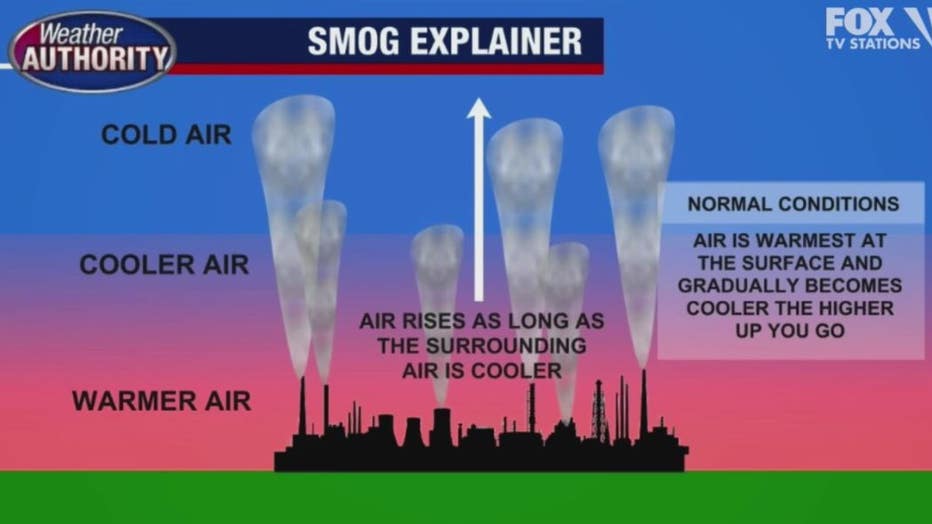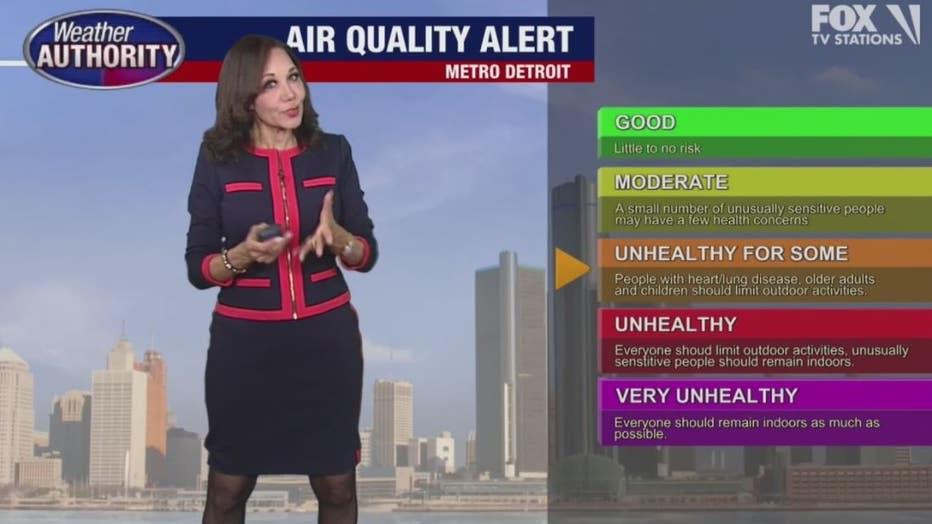Air Quality Awareness Week spotlights the main pollutant impacting the climate
Air quality ozone conditions - how they impact us and the climate
Our atmosphere is changing. Rising surface temperatures, fluctuating precipitation patterns and increases in pollutants bring health concerns attributed to climate change. Concentrating on the air we breathe, two components contribute greatly to air pollution and can be inhaled and absorbed into the bloodstream.
FOX 2 (WJBK) - It is Air Quality Awareness Week and FOX 2's Lori Pinson takes a look at the main pollutant that affects our air-- and its impact on the climate.
Our atmosphere is changing. Rising surface temperatures, fluctuating precipitation patterns and increases in pollutants bring health concerns attributed to climate change. Concentrating on the air we breathe, two components contribute greatly to air pollution and can be inhaled and absorbed into the bloodstream.
One of them is fine particulate matter, consisting of dust, soot, ash, or wood smoke caused by burning fossil fuels or other chemical processes. Despite its microscopic size, fine particulate matter can damage respiratory systems and accumulate in the brain.
Ground-level ozone is another contributor to smog. Both pollutants can become trapped close to the surface, and what we see and breathe as smog or pollution.
Under normal conditions, warm air near the surface will rise as long as the surrounding air is cool. But when that rising air encounters warm air above it, the air will not rise any further. This traps pollution near the surface.
Let's focus on ground-level ozone. This is different from the ozone in the stratosphere located roughly 7 and a half to 31 miles above our surface. Ozone here protects us from the sun's harmful UV rays which could cause sunburn or skin cancer.

Ground-level ozone, found in the troposphere, closer to the earth's surface, is created by chemical reactions between oxides of nitrogen and volatile organic compounds. This happens when pollutants emitted by cars, power plants, industrial boilers, refineries and chemical plants cook under the sun. Ground-level ozone reaches unhealthy levels on hot, sunny days, especially in urban areas during high traffic times. The EPA monitors pollutant levels daily. When they become excessive, an air quality alert day is issued.
An Air Quality Alert Day simply means the air may be unhealthy to breathe. We start at code orange for high levels of ground-level ozone. if you have respiratory concerns, limit your time outdoors.
Code Red Days mean the air is unhealthy for everyone, with sensitive people feeling more serious effects. Since ozone may cause the muscles in the airways to constrict, symptoms could include coughing or a scratchy throat, along with difficulty breathing, aggravating lung diseases like bronchitis, asthma and emphysema.
During these episodes, limit your time outdoors, wear a face mask. If you have asthma, keep your inhaler handy.
Not only does elevated levels of ground-level ozone affect humans. tropospheric ozone can harm vegetation during the growing season. Forests, parks and wilderness areas can suffer under prolonged exposure to high levels of ground-level ozone.
We can limit the amount of chemicals that help ground-level ozone form by carpooling, combining errands or reducing them, refueling your car in the evening. The idea is to minimize emissions. If you used a gas-powered lawn mower, take a break until the evening.
These small steps can go a long way toward minimizing ground-level ozone and can help us all breathe a little easier.


